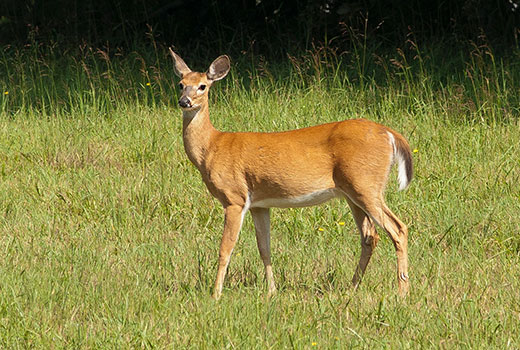
White-tailed deer prefer plants high in crude protein and digestibility, according to a recent study.
Outdoor enthusiasts get new clues on designing successful food plots
MANHATTAN, Kan. – A study of plants preferred by white-tailed deer is providing important information to outdoor enthusiasts who design food plots to encourage hunting or viewing opportunities.
Charlie Lee, who recently retired as the wildlife specialist for K-State Research and Extension, said the study from Mississippi State University indicates that white-tailed deer avoid plants high in sulfur (which potentially can be toxic) and select plants highest in crude protein and digestibility at the time.
“I’m asked many times about the best food plot seed that is out there; what do deer prefer,” Lee said. “This is the time of year that people are thinking about planting cool-season food plots.”
New information from the Mississippi State study indicates that the crops high in crude protein include numerous types of clovers, as well as winter wheat, oats, rye grass and Australian winter peas – many of which are already being used in Kansas.
Lee noted that ladino clover or oats are two good choices for Kansas.
Some examples of less-desired crops include rape seed and turnip and other brassica plants, which are high in sulfur. Turnips start off high in crude protein, Lee said, but by the middle of the growing season, its protein value “drops way down.” Other crops that deer avoid include chicory, a plant from the sunflower family.
“I always encourage people to use a mixture of crops in a food plot, not use just one variety or crop selection,” Lee said. “For deer, it’s important to have a diversity of crops so that they have options to pick the highest quality nutrients with the highest digestibility during all seasons that you expect them to be grazing.”
The research findings draw from more than 13,000 photographs involving more than 18,000 deer over a five-month period for two consecutive years.
For more information on managing deer food plots or other wildlife issues, contact your local K-State Research and Extension office.
